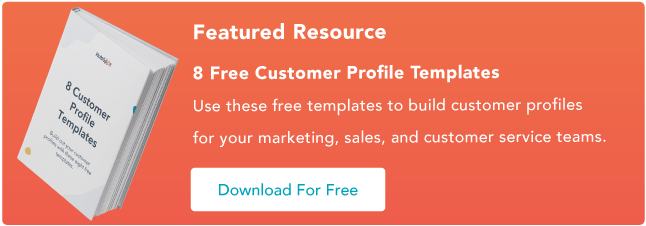Table of Contents
What is customer intelligence?
Contrary to what you may think, this has absolutely nothing to do with your customer's IQ-level. Customer intelligence (CI) is the process of collecting and analyzing information about your customers to understand them on a personal level.
Customer intelligence involves gathering data on your buyers and their decisions. Customers share information about themselves every time they interact with your business. You can learn their interests, needs, demographic details, and preferences.
With this information, you can better understand why they act the way that they do. This allows you to better predict customer action and improve the customer experience (CX).
Additionally, you can reach your audience more effectively, increase loyalty, and create targeted offers.

CI data may come from any of the following customer characteristics and attributes:
-
Likes and dislikes
-
Geographic location
-
Demographic information
-
Challenges and needs
-
Purchase history
-
Customer interactions (e.g., on social media and email)
-
Goals
-
Where and how they spend their time
-
If they've used your product/service in the past
-
If they've used a competitor's product/service in the past
Here are some examples of places you may pull the above customer intelligence data from:
- Current customer data and analytics (e.g., from your CRM and/or CDP)
- Surveys
- Focus groups
- Campaign results
- Marketing/sales email results
- Social media
Why is customer intelligence important?
Customer intelligence offers insight into who your customers are on an individual level. You can adjust different aspects of your business — such as your customer experience, content, or buyer's journey — to different personas. This personalization positively impacts growth, revenue, retention, and loyalty.
Here are some more benefits of customer intelligence:
-
You can increase conversions and sales.
-
You can determine the specific needs of a prospect. With this data, you can tailor an offer to them and improve the chances of conversion.
-
Real-time data allows you to reach customers at the time they're most interested and, therefore, most likely to buy.
-
You can segment your customers into groups based on attributes and behaviors. Prospects can be matched to specific profiles and sent relevant offers.
How to Develop Customer Intelligence
Customer intelligence is crucial to your business' success. That's why your team needs to create a CI strategy. See tips for building a customer intelligence plan below.
Create a customer-focused culture.
Customer intelligence starts with your brand values. Is your customer at the heart of everything you do? Does your product or service solve a customer need? Are you always asking for and implementing feedback from buyers?
If your culture isn't customer-centered, you'll need to make a change. The right attitude will drive your brand's communication, as well as your customer intelligence strategy.
Gather customer data.
Now, it's time to start learning about your customer. That begins with gathering data.
Choose a customer intelligence tool that evaluates your customers' behaviors. That includes what your customer view on your site, their demographics, and who are frequent buyers.
The best customer intelligence tools take this information and make it easy to understand. You can see our favorite CI software in the section below.
Establish customer personas.
Once you gather customer data, spend time diligently examining the information provided.
You can then identify patterns and trends. Soon, you'll be able to establish personas based on your customers' behaviors and demographics
Personalize your customer experience.
Now that you have established personas, it's time to create a personalized experience.
Stary by tailoring your communication. Send out different email and social messages to your different demographics. You can segment your communication based on where customers are in the buyer's journey.
Then, create custom offers. That may be a discount that makes buying more enticing. Or perhaps you're sending the right piece of content to solve a pain point. The right offer shows your customers that you know their needs.
Gather customer feedback.
How do your customers feel about their experience? Is your personalization strategy working? A robust feedback program will help you find out.
Start by creating different surveys — some delivered via email and others native to your site. HubSpot's Customer Feedback Software and CRM can help you gather feedback.
Then, set goals for your feedback program. That includes how many completed surveys you receive and a plan to improve survey results over time.
Remember: Gathering feedback is just the start. You'll also need to successfully implement changes.
You can use information in feedback surveys to assess the efficacy of your customer intelligence strategy. You can then tweak the program based on what you hear.
Customer Intelligence Software
Customer intelligence tools — or CI platforms — allow you to gather, monitor, and analyze your customer intelligence data.
Pro tip: Combine customer intelligence software with your customer relationship management (CRM) platform and customer data platform (CDP). This tech stack allows you to improve and personalize your customer experience.
Alignment on all things customer will help you increase loyalty, revenue, relevance, brand awareness, reach, and more.
1. HubSpot Customer Service Software
When building a CI strategy, HubSpot's Service Software is a powerful tool. You can:
-
Identify best-fit customers to target them effectively.
-
Communicate with prospects and customers in a one-to-one, personalized way.
-
Organize customer communications and provide personalized content.
All of these capabilities and features create a frictionless customer experience. The software also gives you a 360-degree view so you can more effectively support your customers.
Customer intelligence data comes from a number of sources within HubSpot — including your CRM records, deal and email timelines, conversations inbox, and workflows for ticket routing.
You can also gather customer data via surveys to get real feedback and information from your customers.
2. Signal
Signal, by TransUnion, gathers, organizes, and displays first-party intelligence data from every customer engagement. Information is also cross-channel. You can analyze information from different locations — such as your website, mobile, email, CRM, or call center — all in one place.
Signal allows you to create highly-relevant and targeted customer experiences. This personalization can improve conversion rates, engagement, customer retention, and customer loyalty.
3. Intercom
Intercom is a customer data platform with solutions specifically for conversational support, engagement, and marketing. The tool's customer intelligence capabilities make it easy to track, segment, and get to know your customers on a personal level.
With Intercom, you can create and review customer profiles. You can see how each person engages with your brand. In doing so, you'll be able to effectively filter, target, and reach specific customers at the right time. With their Essentials plan starting at $39 per month, we'd recommend trying Intercom or its alternatives before choosing your customer data platform.
You can also segment buyers based on shared characteristics/behaviors.
Bonus: You can synch your Intercom data with HubSpot's CRM. Level up your chatbots with this powerful duo.
4. Asseco
Asseco Customer Intelligence is an analytical system meant for businesses in any sector. With this CI platform, you can compile data about online customer behavior on your website, app, or social media profiles.
Once customer data is collected, Asseco will match individual customers to one of your specific customer profiles (which the tool helps you generate). Asseco will then recommend the most relevant offer or message for each customer.
To do all of this, Asseco uses artificial intelligence (AI), machine learning, and algorithms.
5. Clarabridge
Clarabridge is a CX platform that offers insight into who your customers are and what their interactions mean.
The tool uses AI-powered natural language processing (NPL) to measure the characteristics and attributes of your audience all based on what they're saying in comments and conversations.
These conversations may take place via phone call, email, chat, survey, social interaction, rating, review, or forum. All of that data is compiled in one place for easy access and analysis.
From there, categorize all of your customer data, display it in a pre-built template, and dive deeper into your emotion analytics. With Clarabridge, you'll have the necessary context to create highly-personal experiences and offers for your target audience.
Building Customer Intelligence
Customer intelligence has the power to help you increase loyalty, retention, and growth. Now, it's time to find the right customer intelligence tool. Think about the type of data you want to collect, and choose a software from there.
Soon, you'll be analyzing data and building effective customer personas.
Editor's note: This post was originally published in October 2021 and has been updated for comprehensiveness.
Customer Experience






![Is The Customer Always Right? [What It Means + Why It Matters]](https://53.fs1.hubspotusercontent-na1.net/hubfs/53/customer-is-always-right-origin-1-20250202-6448090.webp)





